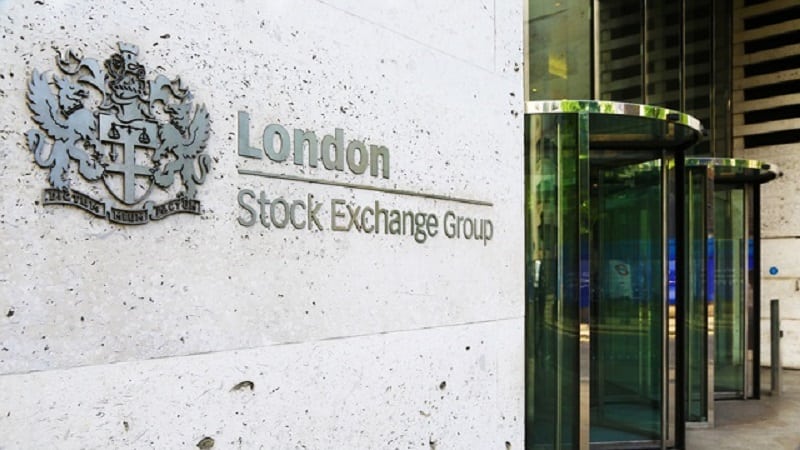The fund manager’s view
Giles Parkinson, head of equities, TrinityBridge
Chinese equities have had a challenging few years, but we believe the outlook is starting to improve. While markets initially waited for a ‘big bang’ stimulus from Beijing, what we are seeing instead is a steady accumulation of supportive measures. Individually, these actions may appear underwhelming, but together they are building toward a more sustained policy shift – a ‘whatever it takes’ approach in slow motion.
Moreover, additional stimulus should be forthcoming as trade and tariff tensions escalate further to cushion the impact domestically.
This shift is reflected in a key signal: the rise in Chinese sovereign bond yields. Previous equity rallies in China and Hong Kong last year were not confirmed by bond market dynamics. The current uptick in yields – albeit from record lows, and still below the levels of last autumn – suggests improving confidence in economic growth and a more credible policy backdrop.
The broader narrative is also evolving. The recent launch of DeepSeek’s AI model has put a spotlight back on China’s innovation ecosystem, demonstrating that despite geopolitical headwinds and trade sanctions, China can be competitive. The situation is analogous to Soviet technical breakthroughs, which prioritised thrifting scarce resources amid economic restrictions, in their technological race against western powers.
Against this backdrop we remain constructive but selective, with a focus on companies that can weather volatility while benefiting from a gradual policy tailwind. We have been increasing positions in life insurance companies with more than a century of experience operating in the Asian region leaving them well positioned to benefit from improving sentiment and capital flows.
The fund selector’s view
Meera Hearnden, investment director, Parmenion
We saw a pivotal moment in China last September when its government finally recognised the economy was in desperate need of a boost. What followed was a change in government policy focusing on stabilising the economy, the property sector and financial markets. Co-ordinated stimulative policies acted as a catalyst for the unloved, underowned and undervalued market to turnaround.
Sceptics thought the policy support would be insufficient and the market rally short lived. But the emergence of DeepSeek in January awakened investors to the fact that China is a credible technology provider offering a cheap and compelling way to play the AI theme.
Simultaneously, this has sparked a new narrative for China’s economy with policymakers publicly supporting private sector entrepreneurs, especially in areas of technology and innovation. As such the government is aiming to raise around $140bn (£108.3bn) to support tech companies, evidencing their commitment to establishing leadership in new areas of technology. All this has helped maintain a new-found positivity around China’s AI development, which is expected to lift the economy’s spirits.
It is nonetheless important to remain grounded and not get complacent. The Chinese government GDP growth target for 2025 is 5%, which seems quite ambitious given elevated geopolitical tensions. In 2024, net exports accounted for about 30% of GDP and given exports could fall materially this year on the back of higher US tariffs, the GDP growth forecast is vulnerable to downward revision, though rejuvenated policy driven consumption could offset that.
Encouragingly, domestic investor confidence has been more positive this year and there are emerging signs the worst of the property markets troubles could be behind it. As such, while I think it pays to be careful and disciplined, I also believe an allocation to China in a diversified portfolio makes sense.
The wealth manager’s view
Jonathan Unwin, UK head of portfolio management, Mirabaud Wealth Management
We recently upgraded Chinese equities from underweight to neutral, and while this is by no means a ringing endorsement of the asset class, there are clear reasons for China to be back on investors’ radar having been unloved for so long.
The dilemma at this point is whether now represents a sensible entry point following the unexpectedly strong year-to-date returns. While some of the outperformance has almost certainly been following the emergence of Deepseek, which has injected some AI-inspired optimism to the Chinese tech sector, we believe that (as with Europe) Chinese stocks have benefited from a rotation out of the US equity market.
In the short term, there are likely to be bouts of profit taking, especially as the extent of US tariffs becomes apparent this month, as investors will be wary that previous rallies have reversed very quickly in the past.
However, it is interesting to note that Chinese indices have held up well in recent weeks, despite western markets being roiled by tariff fears. This suggests the effects of US trade policy on domestic investment are not as serious as thought, or indeed, the markets had previously priced in much of the damage.
In the medium-term, the case for Chinese equities is growing, with economic growth forecast at 4.5% and the government increasingly moving to a pro-growth and lower-regulatory footing, as evidenced by president Xi Jinping’s convivial meeting with private-sector business leaders in February.
Valuations for MSCI China are still supportive and we hope to see further evidence from the all-important credit impulse, in which higher readings have historically pre-empted growth and stronger equity markets.
The strategist’s view
Abhi Chatterjee, chief investment strategist, Dynamic Planner
China’s equity market, a complex entity, remains deeply influenced by both domestic and international macroeconomic forces. The property sector’s persistent uncertainties, including local government debt, have contributed to a sense of financial fragility, compounded by consumer hesitancy.
Despite these challenges, the MSCI China index demonstrated a remarkable 20% growth in 2024, driven by resilient manufacturing capital expenditure. This positive trend was amplified by proactive government interventions, such as interest rate reductions and lowered bank reserve requirements, aimed at stimulating real economy lending. Direct consumer vouchers and trade-in initiatives effectively encouraged consumer spending.
The government’s strategic shift from a manufacturing-centric economy to a consumer-driven one is evident. This shift aims to reduce reliance on capital-intensive infrastructure and mitigate global trade volatility.
Government initiatives promoting equipment upgrades, green transitions and technological independence have fuelled growth in the consumer discretionary and communication services sectors. The automotive industry, particularly the electric vehicle segment, has emerged as a star performer, capturing around 65% of the global electric vehicle market share and being the only automotive manufacturing region to grow. China’s supply chain and cost advantages enhance its export competitiveness.
Furthermore, substantial investments in AI research are yielding results, with companies such as DeepSeek leading innovation. The online entertainment sector, especially gaming, has experienced significant domestic and international growth, despite regulatory hurdles. Simultaneously, consolidation in traditional sectors like energy and utilities, coupled with state-owned enterprise reforms, presents opportunities for investors seeking stable, high-dividend-yielding assets.
However, relying solely on index-based investments in China, like other developing markets, carries risks.
Active management is essential due to the market’s volatility, evolving policy landscapes and diverse sectors. To capitalise on opportunities, rigorous research, flexible strategies and bottom-up security selection are crucial. In essence, navigating China’s equity market requires a nuanced, active approach that goes beyond passive index tracking.
This article first appeared in the April issue of Portfolio Adviser magazine










